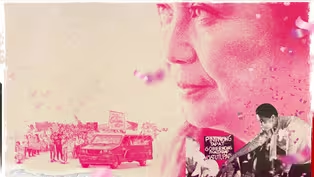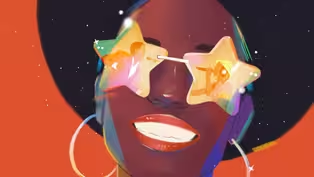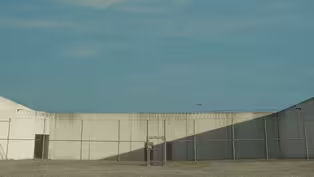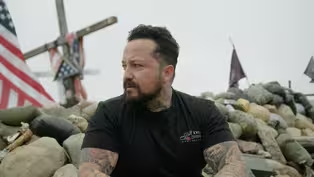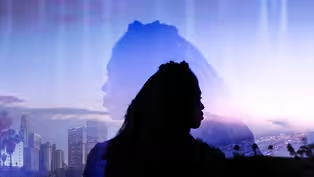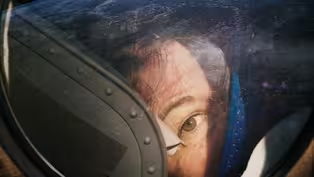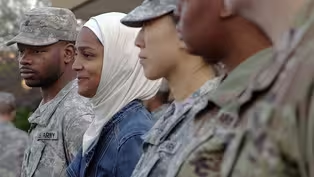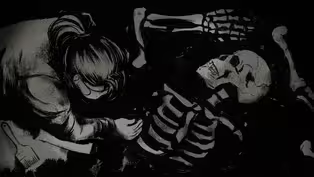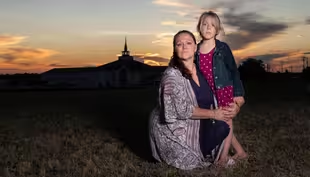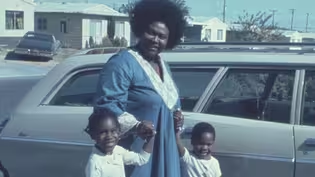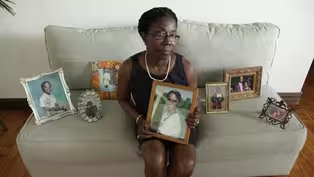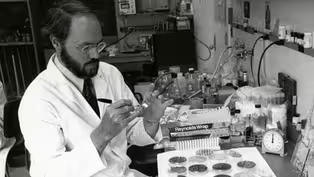
Cracking the Code: Phil Sharp and the Biotech Revolution
Season 27 Episode 1 | 1h 24m 19sVideo has Audio Description, Closed Captions
Phil Sharp’s RNA discovery reshaped science, medicine, and the global biotech industry.
A groundbreaking look at Phil Sharp’s rise from being a rural Kentucky farm boy who battled dyslexia to Nobel Prize-winning scientist. Narrated by Mark Ruffalo with insights from Walter Isaacson, Cracking the Code: Phil Sharp and the Biotech Revolution reveals how Sharp’s RNA discovery transformed biology and launched the biotechnology revolution leading to life-saving treatments for millions.
See all videos with Audio DescriptionADProblems playing video? | Closed Captioning Feedback
Problems playing video? | Closed Captioning Feedback

Cracking the Code: Phil Sharp and the Biotech Revolution
Season 27 Episode 1 | 1h 24m 19sVideo has Audio Description, Closed Captions
A groundbreaking look at Phil Sharp’s rise from being a rural Kentucky farm boy who battled dyslexia to Nobel Prize-winning scientist. Narrated by Mark Ruffalo with insights from Walter Isaacson, Cracking the Code: Phil Sharp and the Biotech Revolution reveals how Sharp’s RNA discovery transformed biology and launched the biotechnology revolution leading to life-saving treatments for millions.
See all videos with Audio DescriptionADProblems playing video? | Closed Captioning Feedback
How to Watch Independent Lens
Independent Lens is available to stream on pbs.org and the free PBS App, available on iPhone, Apple TV, Android TV, Android smartphones, Amazon Fire TV, Amazon Fire Tablet, Roku, Samsung Smart TV, and Vizio.
Buy Now
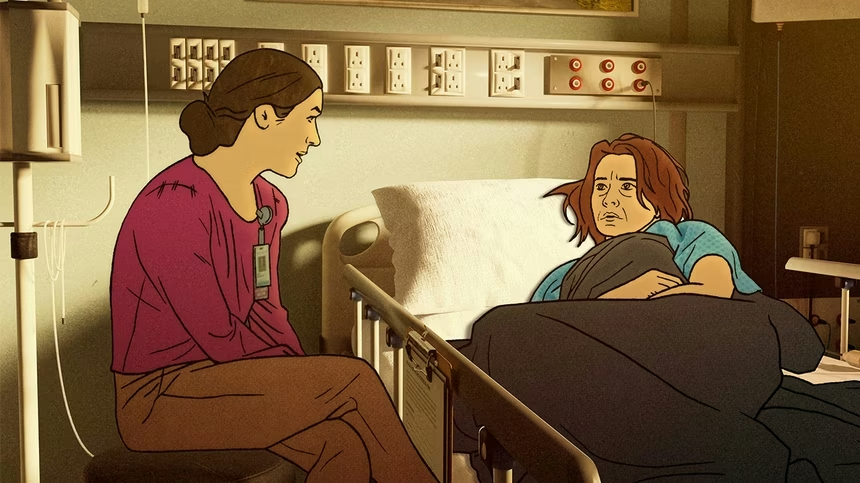
The Misunderstood Pain Behind Addiction
An interview with filmmaker Joanna Rudnick about making the animated short PBS documentary 'Brother' about her brother and his journey with addiction.Providing Support for PBS.org
Learn Moreabout PBS online sponsorshipMore from This Collection
Get inspired by people who've made an extraordinary impact.
Video has Audio Description, Closed Captions
A bipartisan coalition continues a century-long fight to add gender equality into the Constitution. (1h 23m 41s)
Video has Audio Description, Closed Captions
See how the Philippines' tense race for president in 2022 became the nation's fight for its soul. (1h 23m 38s)
Video has Closed Captions
The syncopated story of funk music, from its roots to the explosion of '70s urban funk and beyond. (1h 22m 7s)
Video has Audio Description, Closed Captions
How a small hunger strike against solitary confinement turned into a massive statewide protest. (1h 24m 40s)
Make Peace or Die: Honor the Fallen
Video has Audio Description, Closed Captions
A veteran uses hand-carved battlefield crosses to reconnect with families of fallen, fellow Marines. (1h 25m 41s)
Video has Audio Description, Closed Captions
The central mystery of this unconventional documentary is the nature of sound itself. (1h 25m 17s)
Video has Audio Description, Closed Captions
NASA psychologists prepare astronauts for the extreme isolation of a Mars mission. (1h 24m 52s)
Video has Audio Description, Closed Captions
Muslim chaplains advocate for equality in the military. (55m 43s)
Video has Audio Description, Closed Captions
A collaboration changes the course of forensic science and international human rights. (1h 25m 42s)
Video has Audio Description, Closed Captions
Conservative beliefs have defined them. Now they’re championing their LGBTQ+ children. (1h 25m 23s)
Video has Audio Description, Closed Captions
How Vegas activist Ruby Duncan's grassroots movement of moms fought for guaranteed income. (1h 24m 45s)
Video has Closed Captions
Hazing reveals the tradition of underground rituals that are abusive and sometimes deadly. (1h 43m 28s)
Providing Support for PBS.org
Learn Moreabout PBS online sponsorship♪ ♪ ♪ Man: There's been 3 great innovation revolutions of modern time.
♪ The first is in physics, and a lot of it comes from Einstein's 1905 papers on quantum and relativity, and it's marked by everything from space travel to nuclear power, GPSes, and lasers.
♪ The second innovation revolution, beginning in the 1950s, comes from the 3 inventions of the microchip, the computer, and the Internet, and that creates a digital revolution.
Now we're entering the third great revolution of modern time, and it comes from the sequencing of the human genome and discoveries that DNA wasn't the only story.
RNA was actually more interesting, and so now we're in this third revolution, which will dominate the first half of the 21st century.
Different man: From the point of view of human health and existence, the life sciences revolution is the most important revolution that's ever occurred.
Woman: One of the miracles I've seen in my life is biotechnology.
♪ Man: The drugs that have come out of that industry change lives, and Phil Sharp has been there at every step.
♪ Different Man: In creating treatments for disease, Phil's laboratory has led the way.
Different man: COVID hit.
If not for the work that Phil Sharp did, we would not have an mRNA-based COVID vaccine.
Different man: You know, in nature, you only know the importance of something when it's missing.
In our biotech ecosystem, one might ask "What would have happened if there was no Phil Sharp?"
The wealth of science we see in the biotech industry, how much of it could have occurred without Phil?
Presenter: Dr.
Phillip Sharp, your discovery led to the prediction of a new genetic process, that of RNA splicing.
I now ask you to step forward to receive the Nobel Prize.
♪ Woman: Phil Sharp-- how he got from a Kentucky tobacco farm... ♪ to the RNA revolution... ♪ it's one of the great stories.
♪ Every person is a little novel in front of you, so you just have to understand how it unfolds and how it's shaped.
Narrator: Phil Sharp's story begins in Falmouth, Kentucky, where he was born on June 6th, 1944, D-Day.
Radio announcer: Men and women of the United States, this is a momentous hour in world history.
Sharp: My father and mother lost a store in the Depression.
[Bang] Moved into a building.
It was dirt floor, and that's where I spent my first year of life.
Woman: In a dirt floor house.
It was cold, damp.
Phil's younger sister, I think, almost died because of croup.
Woman: We didn't have running water.
We had a cistern with a pump outside the door, and, of course, we brought the water in with a bucket.
We didn't have electricity.
We had lamps.
Sharp: I was 7 when my parents bought a small farm that I lived on until I graduated from high school, and it was bought by mostly debt, which they were panicked about.
♪ My father was never harsh.
A kind man, disappointed sometimes, and he would tell you when he was disappointed.
Joanna: Daddy loved to read.
Mom--that would aggravate her a lot because when they weren't working out in the field, she felt like Daddy could be doing something around the farm, but if it was raining, she'd find daddy off reading someplace.
♪ Sharp: My mother encouraged us to be confident of who we were, and that optimism has just been part of my whole mental makeup all my life.
♪ Ann: So Phil's mother Kathrin was a very bright young woman, and she only got to go to the eighth grade.
She was desperate to go to high school.
She really, really wanted.
The only way she would be able to do that would be to go and stay with an uncle in town.
Sharp: The only school was 20 miles away.
There was no bus service.
Ann: She was the oldest girl in a family of 6.
Her father said, "No way am I going to let you go "and keep house for them.
You need to stay home and keep house for us."
And she resented that her entire life.
Sharp: Not being able to be educated, at least through high school, made education terribly important to her, so they gave me some tobacco to grow so I could take the money and put it in a college fund, and they gave me an animal to husband on the farm here, and I took the money from the calves when they were sold and put them in a fund for college, but I will note this deal wasn't offered to either of my sisters, all right?
It was offered to me, and responsibility started when I was 8.
[Mooing] Just to tell you what Kentucky was like... [Bird squawks] on this farm, you have to watch out.
There are snakes... [Rattling] sweat bees... [Buzzing] horseflies, blaring sun.
Growing tobacco, you had a spear, which was on a stick, which you had to physically crash the plant down on, and that spear could fall into you.
You were up in the barn, your foot comes off, and you fall.
You're probably 12 years old.
You mistakenly think you can hold the tractor with your brake.
You can't with a load behind you.
I damn near killed myself back here.
♪ It's tough because of the demanding changes in weather.
A storm can cost you a crop of a year.
Markets change.
The value of what you're doing is very low.
All of that is risk.
To survive, you had to depend on each other.
♪ Everyone had to persevere, and it was expected of you.
♪ On a hot summer day in Kentucky when it's 95 and the humidity is 90 and you're gonna be there from 8:00 in the morning till 5:00 or so in the evening, your father is over there, and he's doing it.
Another person is over there, and they're doing it, and the last thing you're gonna say is, "I don't want to do this."
♪ Sharp: Hi.
Hi there.
It's, uh... It's been a long time.
It's been a long time, and this naughty little boy came back to say hello and thank you so much.
I mean, it's so great to see my fourth and fifth grade teacher.
You didn't think she'd still be alive, did you?
No, I didn't--heh heh-- but you started me in science.
Oh, good.
You taught me how to read.
I did something right.
Yes, you did.
That was wonderful.
Caldwell, voice-over: He was just one of about 40 in the classroom at first.
If I could go back in that classroom, I could tell you exactly where he sat.
There's a few I remember where they sat that year, and he was one because he sat directly in front of my desk about 2 or 3 desks back, and I can remember watching him pull a book out.
When he would finish his work, he would pull a book out and sit and read, and I don't think to this day I ever got after him about reading.
He may tell you differently, but I don't think I did because I was so glad that he would read.
Not too many children would do that.
♪ I've always been somewhat an outsider.
♪ I socially was--eh-- not very sophisticated.
I also had a challenge.
I was dyslexic as I could be... ♪ and even stuttered for some when I was a kid, so I had to overcome that.
Ann: He has trouble word finding, especially if he's tired or stressed out in some way.
♪ Caldwell: I did not know Phillip had dyslexia.
In fact, it was a new word.
We were a small county and... maybe you would say backward, I don't know.
I had no knowledge of dyslexia, and he'd had several teachers before me, and evidently, they didn't recognize it either.
♪ Ann: Primary school, they would be reading something, and they went down the line.
You know, Sally read a paragraph or two paragraphs and then Mary and then Joe, and then they'd get to Phil, and they would skip him.
♪ When he read, he read what the page meant.
He did not read what the page said, and he continues to do that.
♪ Narrator: Determined to become a skilled reader like his father and despite his learning challenges, by the eighth grade, friends joked that "Phil has read every book in the school library."
♪ Sharp: I started reading books about geology, history of the Earth, all the biographies I could find-- Washington and Adams, Jefferson, all the way to Boone in Kentucky.
By reading, I could see parts of the world I couldn't touch and feel in Falmouth, Kentucky, 20 miles from the nearest town of 2,000.
♪ I was all over this place.
In the winter, I'd go take an ax and hack through the ice on the pond so the cows can drink water, carry feed to animals.
I would listen to the locusts and think about the locusts and just, you know, what the world looks like under these beautiful trees.
♪ I would think about stories I'd read, powers beyond my own power and beyond the power of other men, and I would form visions of what could be.
♪ I wanted to be a leader.
♪ I can remember very specifically an occasion.
I think it was the sixth grade.
Ann: He loved basketball, and he dearly wanted to play.
Sharp: I went out for the team.
I was a little pudgy, and I didn't make the team, and I was crushed.
♪ My father went to the coach and asked if I could practice with the team but not suit and play, and the coach agreed.
Ann: It was a matter of taking the risk of saying, "OK, I'm not good now, but maybe I'll be good later," and he was.
♪ Sharp: I worked 7 years to get there--ha ha--right, but I got there, and I wasn't a star, not even close, but I was able to participate.
I got the most fouls.
I may still have the school record for the most fouls, but it was competition, and I focused myself and worked hard and succeeded.
♪ Caldwell: I would say he wanted to win.
Yes.
Ha!
He did.
Ha ha ha!
That's a good trait.
If you give up, you don't accomplish very much, and Phillip wasn't somebody I thought as a quitter at all.
♪ Sharp: When I was a junior, a teacher named Mr.
Kellams came to Pendleton County full of energy and new ideas.
He started the science club.
♪ He bought a telescope, and we could look at Jupiter.
I was so surprised when I saw Jupiter.
Heh!
♪ He taught chemistry... ♪ physics, as well as higher math, and I spent the whole day with him.
Heh.
I just loved it.
It was just one of the great experiences.
♪ The principal calls me out of my class.
I didn't know what I did, but it isn't good news to go see the principal, so I went to the principal, and he sat me down, and said, "Phil, the Chamber of Commerce, "they would like to know if you would be interested "in them helping you go to college "and to medical school if you would commit to come back to Falmouth."
I thought about it for a few moments and said, uh, "I am in no position to make that decision about my life."
I didn't know what I was gonna do, but I sure didn't think I was going to live in that county for the rest of my life.
I had saved enough money for about a year and a half of college, so thank goodness for Sputnik.
[Man speaking Russian] Narrator: Russia's launch of Sputnik, the world's first satellite, announces that the race for space is on, and America is behind.
Sharp: Sputnik went up, and the country invested in education and particularly in science and technology, and so I took a loan, went to a small college in the mountains of Kentucky.
♪ Narrator: In 1962, Phil goes to college.
Only 10% of his high school graduating class will do the same.
♪ He enrolls in Union, the only school he applies to.
It's a 2 1/2-hour drive from home.
His tuition is $470 a semester.
♪ I met Ann, my wife, the first day I was there.
♪ Ann: He was even at that time very focused academically.
♪ Sharp: Got immersed in science, and I particularly got fascinated about biology and how chemically you could understand life.
♪ Humans, plants, all creatures, we share the same genetic processes, we share the same biochemical processes.
I learned all of life is connected.
♪ Ann: He is a dreamer.
He sees connections that none of us see.
We were young.
We were in love.
Heh.
♪ We both had been working in the food hall, washing up dishes and such, and that is, in fact, how he afforded my ring.
Ha!
I thought, "Oh, I'm marrying a high school chemistry professor."
♪ We got married between our sophomore and our junior year.
We were 20 years old, both of us.
♪ Sharp: I wanted to get advanced degrees.
Ann: We graduated from Union College and went straight to the University of Illinois.
I didn't think I was ever going to find a job, but I did in the middle of the year teaching third grade.
♪ And we found a trailer in a trailer park right on the edge of Champaign-Urbana.
The bedroom was as wide as the bed.
♪ Sharp: I take the entrance exams.
I fail 3 of the 4.
I'd never seen the material.
It just wasn't taught at Union.
I thought, "Things are going sideways, maybe a little backwards."
♪ They said, "Take our senior classes."
♪ Narrator: Ultimately.
Phil is accepted into the graduate school.
He devotes himself to unraveling secrets in the chemistry of DNA, receiving his PhD.
♪ Eager to build upon his thesis work on DNA, which he dedicates to Ann, Phil applies to do postdoctoral work at the California Institute of Technology, home to some of the most gifted scientific minds in the world.
♪ He makes it through the fiercely competitive acceptance process.
He and Ann are 25 years old.
Ann: Never been to California in my life.
Phil'd never been to California in his life.
I guess we were both a little bit risk takers.
And at that stage, we had a daughter.
♪ We bought a car, drove out to the Midwest, camped for 6 weeks to see the country.
Ann: We got very, very good at setting up camp.
Ha!
We had it down pat.
Ha ha ha!
♪ ♪ Sharp: Clearly, I wasn't the strongest student either in math or in chemistry... ♪ but I turned out to be very imaginative.
Heh.
♪ Narrator: At Caltech, Phil tackles the difficult challenge of uncovering how a DNA sequence codes for a particular gene.
Sharp: I was reaching into biology and molecular genetics, and I developed some technology.
It was novel, and people around the world, they were writing, saying, "I'd like to come and work with you."
♪ Narrator: Nearing the end of his postdoc, Phil wants a job teaching and doing cutting-edge scientific research at a leading university, but he can't find one.
In 1971, millions of Americans are out of work as a deep recession affects the entire country.
♪ Ann: We had a family, so we needed some way to support the family.
♪ Uh, I found that a very, very difficult time.
♪ Narrator: After 6 months of struggling to find a job, Phil writes to Nobel laureate James Watson looking for work.
♪ The job market was very bad in '71.
It was a very uncertain time.
Narrator: James Watson, famous for his 1953 co-discovery of DNA's double helix structure... ♪ agrees to extend Phil a second training fellowship at Cold Spring Harbor Lab.
The job pays $6,500 a year.
So we moved back across the country, Ann and I, in the same car.
Heh.
Ann: Packed up our tent, our baby, and headed off to New York.
♪ It was a little hairy when we first got there because there wasn't any place for us to live.
We're modest in our expectations, but where are we gonna sleep?
Ha ha ha!
You know, I'm in tears.
The lab scrambled and rented a house.
We shared it with Ron and Janet Davis.
♪ Narrator: At Cold Spring Harbor, Phil publishes 5 highly respected papers outlining how genetics play a fundamental role in causing disease, including cancer.
♪ Sharp: A simple virus, they have genes that cause tumors.
We wanted to understand what those genes were doing, but after 3 years, I wanted to move to a university, so I went on the job market, traveled around the country.
This is the academic marathon where you give seminars and they figure out whether they want to have you as a colleague.
Narrator: Phil's dream job is at MIT, where professors have secured funding for a revolutionary new cancer center.
♪ Sharp: Boy, that led me to saying, "I want to go to MIT and be down the hall from Dave Baltimore."
He was an internationally established future Nobel laureate, and I was hoping that I could get an offer from MIT, so I was waiting.
♪ Richard Nixon: More people each year die of cancer in the United States than all the Americans who lost their lives in World War II.
This shows us what is at stake.
Narrator: In 1971, President Nixon declares war on cancer, dramatically increasing funding for scientific research and education.
♪ Baltimore: We were trying to build a cancer center at MIT.
We looked around for bright, young molecular biologists devoting their lives to understanding the relationship of viruses and cancer.
Phil just stood out, and so we asked him to be one of the very first young investigators at the cancer center.
♪ Sharp: I was the worst negotiator.
I basically said, "Yes, you know, I'm coming.
Let's figure it out."
This was '74 when I moved.
I had a formal academic appointment focused in the cancer center.
It was one of the most dynamic communities.
♪ We just coalesced.
Sharp: Having a relationship of mutual support and mutual stimulation made doing science a joy.
♪ Woman: I do recall standing back in awe and thinking, "Boy, that's somebody."
A central requirement of being a genius is being off center, off kilter, and not minding.
He is...undaunted, unapologetic.
He's not the first person to ask a question in a seminar, but when he asks a question, he's not asking the question to show off what he knows, a very common motivation when you're in these very high-level seminars, I can tell you.
Ha ha!
But, uh, he asks a question out of a very deep curiosity.
♪ What are you growing in the Bio-Rad?
Um...[indistinct] Hockfield: Being a scientist isn't for everyone, but when the match is right... [Whoosh] it's magical.
[Whoosh] I come from a small town in Virginia, New Market, Virginia.
There were only 92 kids in my graduating class.
Only 10% of them went to college, so about 10 people.
♪ Coming from a very rural background where you're not very sophisticated, you know, it takes some time to adjust to being in, frankly, a world-class institution.
♪ Woman: I grew up in this little town in Louisiana.
I knew I didn't have the same background as people coming from the wealthy suburbs of Boston, for example.
Where I grew up, the expectations for women weren't very high.
I think being an outsider and always wanting to prove that you belong, you belong at MIT, that driving force helps because science is hard, and you've got to be determined like that.
♪ Woman: I'm interested in science because it's a puzzle and there are problems to be solved, and you can try and think about logical solutions, and as someone who loves math, that was sort of how I thought about science, but most of the work is a slog.
You're doing the same experiments over and over with slight nuances, and it's only occasionally that you step back and you say, "Wow!
This might actually mean this."
Melissa: One of the important ingredients in all great scientists is that maybe they've drunk the Kool-Aid on their own ideas, but they're not gonna get dissuaded by people who say, "Oh, that could never work.
Don't even try."
But what if it did?
Then what would that mean?
The big leaps in science are always where people have taken a big risk and really could have a major impact on the world.
♪ John Chancellor: Our "Nightly News" special this evening is about DNA, a genetic chemical which sets the pattern of life in cells.
Our special is also about a dispute involving certain genetic experiments, experiments which some people think are very important, which some people think are very dangerous.
The experiments could be both.
Narrator: In the early 1970s, rapidly advancing scientific insights result in a bold experiment.
2,700 miles away from Phil's virology lab at MIT, Stanford University scientist Paul Berg pioneers a novel technology By successfully inserting fragments from an animal virus into a strand of bacteria, he launches a revolutionary new field, recombinant DNA.
Reporter: Scientists have now found a way to isolate individual human genes, that small portion of the DNA molecule that determines the behavior of a cell.
For example, the gene that instructs a cell to make insulin.
Narrator: This exciting breakthrough ignites widespread concern.
♪ Sharp: Before Paul Berg, No one had been able to move a gene from one organism to another organism.
That captured the imagination of many scientists and many people in the public.
♪ Man: One of the things scientists have to do is, after they come up with a great discovery or invention, worry about the moral consequences of it.
♪ Sharp: The first thing I learned was that there was going to be a moratorium on recombinant DNA work debated at Asilomar.
Narrator: Asilomar, California, in 1975 becomes the scene of a 4-day international meeting of the minds.
140 scientists from 16 countries converge, debate, argue, and ultimately establish controls of recombinant DNA research.
Isaacson: Led by some great biologists but also some ethicists.
They figured out what are the rules we're going to have.
♪ Baltimore: We not only got the group who was there to agree to that.
We got the world scientific community to agree to it.
♪ Narrator: Although the National Institutes of Health rapidly endorsed the Asilomar guidelines, some communities disagree.
Reporter: The idea of genetic engineering going on in his city horrifies Cambridge Mayor Alfred Vellucci.
I'm worried about contamination, infections, something that could crawl out of the laboratory such as a Frankenstein.
DNA research should not be done in a city populated with people.
[Gavel bangs] Narrator: In Cambridge, Massachusetts, Phil and his team are banned from all recombinant DNA experiments, but on the West Coast, where scientists freely explore this brave new world of exciting research, visionary entrepreneurs take the technology further into the world of novel drug development.
♪ Sharp: Back in 1977, I got a call from Ray Schaefer to consult for an investment in Genentech.
Didn't know Ray Schaefer, didn't know Genentech.
Man: And the way he explained it was "I didn't even know what a venture capital was."
Sharp: Colleagues around me at MIT, no one was involved in biotech.
It wasn't even a word.
♪ I flew to San Francisco and walked in, and here was Bob Swanson, Herb Boyer, the two founders of Genentech.
♪ Ann: They gave a spiel about what they wanted to do.
Narrator: In 1977, 5 million Americans and 98 million people worldwide have diabetes, a condition in which they are unable to process sugar in their blood in a healthy way.
♪ Insulin, made by the grinding of the pancreas of animals and forming it into a solution to be injected daily, helped many diabetics stay alive.
♪ Man: Pig pancreas.
You had to have tens of thousands in order to get just a little bit of protein, and you can imagine in humans, the body considered it a foreign substance because it's not human.
Sharp: Boyer and Swanson, they showed a better treatment, first basic product of human insulin.
Schaefer and them asked me what I thought, and I said, "I don't know if you can make a buck with this science, but they are going to do it."
♪ Narrator: Based on Phil's endorsement and despite the enormous risk involved, Ray Schaefer and his partners invest in Genentech, the world's first biotechnology company.
♪ Ann: And only later, many years later, I said, "You know, you should have taken some stock options."
Ha ha ha!
Of course, I had no idea what a stock option was.
Ha ha ha!
I think he got a couple hundred bucks.
♪ Narrator: Meanwhile, Phil joins his colleagues in Cambridge working to overturn Mayor Al Vellucci's recombinant DNA research ban.
Vellucci: I have made references to Frankenstein.
Some people think this is all a big joke.
Sharp: The place was packed.
Students were all over the place.
Everybody was talking, and there was an enormous amount of noise.
Vellucci: Next.
Phil Sharp, associate professor of biology at MIT, and I'm in favor.
[Indistinct chatter] Vellucci: All right.
Next.
Sharp: It was really quite an elaborate show.
We must have did something.
Reporter: So you're feeling that-- I brought you from Canada right here to Cambridge.
Narrator: Journalists from around the world take interest and descend upon the hearings.
Vellucci: We could have a major disaster on our hands.
Can you make an absolute 100% certain guarantee that there is no possible risk?
Sharp: You couldn't say yes because it had never been done before.
Man: All right.
Now, you made the statement.
There's no known dangerous organism has ever been produced by a recombinant DNA experiment.
Yes.
Now, just what the hell do you think you're gonna do if you do produce one?
[Indistinct chatter] Um, well, I--can-- Pardon?
Vellucci: Don't put it in the swer.
Baltimore: We, the scientific community of Cambridge, had to respond to this kind of naked politics, and we weren't used to that.
There was none of us who had any background in that.
As near as we can tell, the probability that that event will occur is extraordinarily low.
Baltimore: We settled down and did it.
We went to city council meetings.
We spoke up.
Some of the conceivable experiments might indeed prove hazardous.
Those experiments have been prohibited by the NIH guidelines.
We brought in physicians, in particular, who said, "These people are creating the understanding "that we will be able to take to our patients.
You want us to be doing this," and so Vellucci, in a way, in order to get out of it, sets up this community panel, and--I don't know--the guy who ran it delivered oil, and there was one nurse, who had some training in biology, but that was it.
♪ They were very thoughtful.
They asked the questions that bothered them.
Buderi: They delved into it, they began to understand it, and they began to realize that the power of this new technology, the promise of it far outweighed the danger of it.
♪ ♪ They came back and said, "We think the NIH guidelines are the right response," and that finished it off.
Walter Cronkite: The Cambridge, Massachusetts, City Council has ended an 8-month debate by giving the go ahead for controversial genetic research to Harvard and MIT.
Baltimore: We were happy.
Sharp: It was really exciting.
I had some of the best postdocs in the world coming to work with me, Melissa being an example.
Melissa: Phil's lab was all kinds of notes and things written on the walls and looked like a bomb had gone off.
He did not want to renovate the lab because he did not want to shut down and stop any experiments.
Meyers: Humble and reserved as he was, he would be the first person to tell you about your competitor.
He used to tell me about Roger Kornberg all the time.
Melissa: He really saw us as a basketball team, where we needed to win and beat the other teams.
♪ There was the Maniatis team at Harvard that he was extremely competitive with.
There was Joan Steitz's at Yale.
Announcer: Unbelievable!
Meyers: He would walk through the lab, and he'd do this.
"Any breakthroughs today?"
Claire: Yes.
Phil's very competitive, but that's what you need to make sometimes big advances in science, and it's a great motivator.
♪ Meyers: It was his calm way of saying, "This matters.
"Let's get to it because there's lots to figure out and lots of people who are trying to figure it out."
♪ Isaacson: In the case of the physics revolution, we figured out the atom.
In the case of the digital revolution, we figured out the bit, and now with the life sciences revolution, we have figured out both the fundamental unit of heredity, the gene, and how it's encoded, and the fundamental unit of life, which is the cell.
Narrator: Cells are the basic building blocks of all living things.
The human body has trillions of them, most of which carry DNA.
♪ Melissa: The central dogma of biology is that information flows from DNA to RNA to protein, where DNA is the master copy, RNA is the temporary instructions to make the protein, and the protein does the work.
♪ Narrator: Within the human body, proteins are essential for nearly every task of cellular life, including the production of muscle, bone, enzymes, antibodies, and hormones like insulin.
♪ Isaacson: The central dogma of biology is that the DNA encodes the genes that we have but that RNA then takes that code and goes to the region of the cell that builds proteins and tells the cell what protein to build.
That central dogma sort of explains how all of life works.
For the body to coordinate all of its activities, there are 20,000 genes, and each gene has many different ways that it functions.
Man: How do cells actually transfer this incredible storehouse of historic, hereditary information and make thousands of proteins and cells that, in this highly orchestrated way, do magic?
♪ Sandrock: We're really trying to understand what causes disease, what happens biologically and molecularly to cause disease.
♪ Melissa: There had been a realization that many human diseases are caused by the lack of a particular protein, but where are the instructions to make those proteins?
Man: No one knew, and that's what motivates scientists, is to dig deep into understanding how these things work.
That's what motivated Phil Sharp.
Sharp: One of the things I set my mind to do was to basically understand how DNA could focus on a gene and control it.
♪ Claire: The objective of Phil's work was to understand how our genes, our human genes, are expressed in cells.
So in your piece of DNA, you had two ends.
Then you had this loop, this bubble, so that was my task, to take pictures of dozens of these molecules and measure the two ends and measure the loops.
What I noticed was that at the end of the loops were two tails that were extending out.
They were single-stranded RNA, but they weren't pairing with anything.
I showed them to Phil, and he said, "It must be an artifact, "so go back and change your conditions.
"Change the temperature.
Add a little more salt.
See if you can get those to go away."
So I did that for several weeks.
No luck.
Nothing changed.
Little tail was still there.
♪ Sharp: So it was puzzling as to why this RNA was not part of the DNA.
♪ Claire: That's when David Baltimore came up with the idea "Well, must be coming from somewhere "on the viral genome.
Why don't you use a longer piece of DNA?"
Sharp: She had just made the preparation, took it to the electron microscope.
♪ We sat there and looked and looked and looked, and it turns out being dyslexic is good for this--ha ha ha!-- because you depend on finding patterns in what you visually see, and I realized that the RNAs were being made in a big, long piece, and pieces of it were being picked to be spliced together to make this message.
Claire: Gene after gene were in pieces separated by junk, and this junk has to be removed and the pieces joined together, which had never been seen before.
♪ Sharp: I saw it.
I know it.
I was screaming obscenities.
It was so mind-blowing.
It was--it was-- "Oh, holy you-know-what!"
Ha ha ha!
"What is going on here?"
So our DNA is this very long molecule, extremely long.
Each nucleotide is like a frame in a film.
♪ Hockfield: Information... and junk.
Information... and junk... ♪ and the only way it makes sense is if you can stitch the parts that make sense together and get rid of the intervening parts that don't make any sense.
Crazy.
Man: There's so much science, often beautiful, amazing science, and you're seeing things that nobody else has seen on the planet.
♪ Man: I remember sitting on the floor in the big lecture room at Cold Spring Harbor suddenly hearing this fantastic story that the RNA molecules made by a virus were chopped into pieces and recombined into smaller units ♪ that finally then coded for proteins.
Very exciting moment.
♪ Claire: It turns out that many hereditary diseases are caused by mutations that affect the splicing, so the splicing doesn't get done, or it gets done wrong.
That can cause muscular dystrophy or influence cancers.
♪ Baltimore: These mistakes occur, and they're passed on to the next generation.
♪ Narrator: Phil's discovery attracts a lot of attention.
♪ Buderi: Sharp gets approached about setting up a second biotech company.
Phil's first comment was, "You got to get Wally Gilbert involved."
An extraordinarily talented, brilliant man.
♪ Gilbert: I was skeptical.
We had no idea of how to organize or run a company or really what would be involved at all.
We had to decide is this gonna be worth doing, and worth not in the sense of making money but worth doing in some greater social sense.
There was a lot of skepticism back in the seventies, skepticism both in ourselves and in the people surrounding us.
♪ We were all looking at each other, you know, "Should we do this?"
♪ Sharp: I seriously thought about it.
"Have I overestimated what I can do "and what's possible to do?
"What is success?
Can I deal with it if it doesn't work out?"
I didn't know, but I did know I had the best people on Earth who were involved in it as scientists, and there were some businesspeople who were helping us.
The vision of creating a whole private sector to help patients built on genetic manipulation was like having an opportunity to create the future.
♪ It was step forward and see where it would go.
♪ [Beep] We organized the company with a million dollars, took space in a little laboratory.
Narrator: As Biogen grows, it moves from a small, rented lab into a newly constructed Cambridge facility.
♪ Sharp: Cambridge had guidelines for recombinant DNA, and almost everyone who understood this technology was a student or a postdoc or a faculty member in an academic institution.
♪ Hockfield: The founding principle of MIT is that we help the industrialization of America, to transfer technology from our labs into companies.
Sharp: So being adjacent to MIT was just a beautiful location to recruit people to.
Wally Gilbert was CEO at that stage.
Gilbert: So I take over, go on leave from Harvard and run Biogen starting in the middle of 1981.
I ran that company from 40 people to 400.
Jacks: It was a real beehive of activity.
People were there at all hours, both days on the weekends, busting their butts.
Ann: His work always had high priority.
Family had highest priority, but we often had to step back a little bit.
♪ Narrator: As Biogen labs start humming in Cambridge, Genentech's progress accelerates in San Francisco, but they need more money to continue their quest to produce human insulin.
In October 1980, Genentech makes history by going public.
[Bell ringing] Yes, yes.
You want to get in business, right?
Cronkite: It was one of the wildest days on Wall Street in a long time.
The one word on every broker's lips was "GENE," trading symbol for Genentech, the first genetic engineering company to offer its stock to the public.
Every call on the board was Genentech.
Cronkite: In just 20 minutes, the value of Genentech stock doubled, and by the end of trading, the small San Francisco company was worth a half billion dollars on paper.
It was an incredible performance, especially considering that Genentech had yet to bring a single product to market.
Man: There's something about the American risk appetite that says, I'm willing to put my chips on the table and make a bet.
Get me up a half a Genentech.
Man: You're up.
Thank you.
We're making a lot of progress, but it's still a great deal of work has to be done.
Narrator: Swanson attributed the IPO's success to the public's fascination with the emerging field of genetic engineering, saying... Swanson: It was a kind of technology that can capture people's imaginations.
You know, you had people say, "Oh, put this in the drawer for my grandkids.
You know, this is something for the future."
I always carry my Constitution when I teach, and if you look there at Article I, it begins "To promote the progress of science and useful arts."
It gives us the right of having a patent.
If we discover something, we get to commercialize it.
[Buzz] Vaishnaw: This is uniquely American.
It's open to those that say, "Let's take a risk and try this.
"This will be hard, but we should do it because something amazing could happen."
♪ ♪ Narrator: Phil's early endorsement of Genentech is validated when, in 1982, the first successful gene spliced medication emerges.
Scientists have made human insulin in a laboratory.
This could be very important news to the millions of diabetics throughout the world.
Ken Gilmore reports.
When gene splicing or recombinant DNA experiments first came to public notice a couple of years ago, backers of the technique predicted that it would lead to important medical advances.
Today's news confirms that promise.
♪ I mean, it is real human insulin, not pig, not any other species.
We just have cells make it.
It's pure.
It's not gonna cause reactions.
It's a much better product.
Isaacson: When Genentech came up with a way to make synthetic insulin, people realized, "OK, we're in a whole new world," and that's what begins this revolution.
There's been an exciting breakthrough in research on diabetes.
Narrator: This milestone breakthrough catalyzes a biotechnology boom.
Genetic engineering.
Medicine's new frontier.
Woman: Biotechnology Incorporated.
♪ Gartin: If you go back to the inception of the biotechnology industry, the companies were very small, and there weren't very many of them.
Woman: I mean, now we've got 250 publicly traded companies over $500 million.
Back in 1980, we had less than 15, and they were pipsqueaks.
So Amgen, Biogen, Chiron, Gilead.
Genetics Institute, Vertex, Genzyme, and granddaddy of them all-- Biogen.
♪ Sandrock: At Mass General, I was a neurologist thinking I could help people.
That's why I decided to be a doctor, but, you know, I felt helpless.
When I was a resident, we had no disease-modifying treatments for MS.
We gave patients steroids, but it wasn't really altering the course of the disease, And I had a medical school classmate get diagnosed with MS in her first year, and by the time the class graduated, she was already in a wheelchair, and so it's the patients, it really is, and being unable to help them was the primary driver for me coming to biotech.
I ended up at Biogen.
♪ Back then, it was considered career suicide.
♪ Somebody even referred to it as, "Al is undergoing apoptosis," which is cell death, programed cell death, that by going to biotech, I was undergoing career death.
♪ Narrator: With the cost to support its drug portfolio growing, Biogen needs to follow Genentech's path by raising money on Wall Street.
[Indistinct chatter] Sharp: Goldman Sachs was going to do an IPO, and the company become traded on Nasdaq.
[Bell ringing] ♪ Narrator: Although Biogen's initial public offering goes smoothly, the next few years of drug development prove more difficult than expected.
♪ Every time you have a boom, you're always gonna have a bust.
I mean, you have to.
It's the law.
♪ Sharp: Our IPO stock value was $23 a share.
A few years later, we were trading at 4.
We had $40 million worth of cash at that stage.
That was what we were burning in a year.
We were still 5 years from a product, and it didn't feel good because we were concerned that the company wouldn't survive.
[Ticking] Gilbert: Time is essential because the company is burning money constantly, and you have to make things happen quickly.
If you don't have that ability, the company fails.
[Gavel bangs] ♪ Sharp: There's a real advantage in being naive because you can't see all the issues.
Did I know you had to raise hundreds of millions of dollars to make a pharmaceutical?
Did I know that most companies fail?
No.
♪ Chutter: The human body is incredibly complex.
Gartin: There are all kinds of different diseases.
The causes are generally unknown, and to develop the science and go through the whole approval process with the FDA and other regulatory agencies is a very risky endeavor.
In terms of how much it costs to develop a drug, a roundhouse number would be in the area of $2 billion.
Chutter: it's really hard to find investors.
We typically use the term the valley of death.
There's so many steps.
Vaishnaw: Phase 1, phase 2 to phase 3 where you do 2 large well-conducted studies.
Chutter: There's only a 10% likelihood that it'll ultimately be successful.
♪ Man: Drug development is not for the faint of heart.
It's not easy.
It takes time.
It takes resilience.
It takes grit.
Man: Especially at the early stages of the company, You know, it's kind of like a newborn baby.
It needs nurturing in every way.
♪ Sharp: The investment, the risk is enormous.
You had to have good plans and persevere.
Chancellor: Scientists in Boston today claimed a major medical breakthrough.
They said they have used bacteria to produce a substance called interferon.
Interferon fights many viruses, including those believed to cause many forms of cancer.
♪ Sharp: Biogen produced alpha interferon, and in 1986, it was approved for hairy cell leukemia.
It's used for treatment of hepatitis C, hepatitis B. It's still used around the world and rescued Biogen.
Biogen grew to many thousand employees.
♪ Narrator: Biogen's alpha interferon becomes the first anticancer agent recombinantly produced by genetic engineering.
♪ [Birds chirping] ♪ Sharp: Columbus Day in New England, I was sleeping in, and it was 6:00 in the morning, and the telephone rings.
Ann: Phil goes over to answer the phone.
[Telephone ringing] He turns white.
I said, "Oh, my gosh.
His mother died."
That was my reaction.
I mean, who calls you at 6:00 in the morning?
Mom and Dad had called me that morning and said, "Have you heard the news?"
And I said, "No.
What news?"
"Phil has won the Nobel Prize," and I was flabbergasted.
[Cheering and applause] When you walk in a room like this and all your colleagues and friends give you a standing O, days don't get better than this.
Heh heh heh!
Congratulations, folks!
[Cheering and applause] ♪ Baltimore: For Phil, it was an enormous vindication of the whole trajectory of his life.
♪ Pendleton County, Kentucky, community is bursting its buttons with pride tonight.
One of their own, a Kentucky boy, has won the Nobel.
Reporter: His parents say Phil was an all-American kid who loved sports, church, and especially science and schoolwork.
We never had any worries about him when he was growing up.
We trusted him, and he fulfilled our trust.
I just can't believe I'm a mother of a Nobel Prize winner.
Ha!
Reporter: One of Phil's two sisters, Joanna, manages the cafeteria at Holmes High School, and she's feeling, well, the way you might expect.
I'm very, very proud.
Believe me, he does not come from money.
This was strictly his drive and his ambition and his talent, and if he can do it, I think other boys and girls should be--say, "I can do it, too."
I was thrilled to death for him, but I had no idea that he was gonna take us to Sweden with him, and that was the biggest thrill of our lives.
♪ [Fanfare] [Applause] ♪ And to see him onstage... it just right now makes me cry.
So I was so proud of him.
So, uh, he, uh... he's something else.
[Birds chirping] On our health report tonight, a new drug for people who suffer from multiple sclerosis.
Narrator: In 1996, 17 years after the company's founding, the FDA approves Biogen's Avonex, the first-ever disease-modifying therapy for multiple sclerosis.
The success of Avonex will catalyze the development and approval of a series of life-altering drugs for MS patients.
Sandrock: Little spark starts a whole fire, and now we have 20 therapies for MS.
I never would have imagined that as a resident.
It's a whole different world.
♪ Narrator: Beyond multiple sclerosis, Biogen has 13 FDA-approved drugs, including treatments for Alzheimer's and spinal muscular atrophy.
♪ Man: I was working at the "Wall Street Journal," and I'm interviewing Phil Sharp in around 2002.
We were talking about something else, but I just said to him, "Is there anything else important?"
And he said, "Yeah, there is, and it's RNA interference."
♪ Narrator: In 2002, Phil co-founded Alnylam, a biotech company named for the bright center star in Orion's Belt.
He's 58 years old and betting that RNA interference, co-discovered by his student Andy Fire, is the future of drug development.
Reporter: Fire's breakthrough genetic research with Craig Mello was published in 1998.
They found certain RNA molecules could turn off specific genes in animal cells.
♪ Man: The idea is, you take a disease where the people are sick because there's a gene there that's out of control, and the question is, can we shut that gene off?
♪ Langer: DNA makes RNA makes protein, and proteins might either do good or do harm.
If they do harm, then you want to try to shut that process down.
The idea was to take that discovery, really make drugs out of it.
♪ Melissa: Bob and Phil had been collaborating around this company, Alnylam, to figure out how to deliver these drugs into cells.
And our first technology to do that was lipid nanoparticles.
Meyers: We take a piece of RNA, and we encapsulate it in these lipids.
That allows it to get into cell and do this mechanism RNA interference.
That was the launching point for Alnylam.
It was lots and lots of hope and prayer in the beginning, right?
The company went public on zero data.
Chutter: Alnylam, when they went public, they could only raise $30 million, and they secured a number of partnerships with a number of pharmaceutical companies.
♪ Meyers: We were going to propel our business by getting in bed with pharma.
I say that in the nicest possible way.
♪ Chutter: And then the dark days came where all those pharmaceutical partnerships were terminated.
Carroll: They said, "Wait a second.
"This does not fit my 5-year plan, "and that's what they pay me for, so we're gone, we're out of here."
Meyers: There was a conclusion that came in the external world that this whole RNA interference thing, maybe it worked, but it wasn't working as quickly as it should have, and so as pharmaceutical companies publicly pull out, you take a significant hit.
[Gavel bangs] We did two rounds of layoffs.
It was a real challenge to get people to maintain their enthusiasm and their passion and their grit in light of the external community trash-talking you, your stock being in the toilet, and a general pall.
♪ Carroll: When Big Pharma pulled out, a lot of people just said, "Oh, this is it, you know.
They're not gonna to be able to make it."
Meyers: We had an off-site, and Phil was invited to give the keynote speech, and what he said was, "This thing that we do, science, is hard, but I can feel it, "that we, the collective group here at Alnylam, "are at the cusp of changing medicine.
"You guys are gonna change medicine "with the creation of drugs through RNA interference that change people's lives."
I think Alzheimer's is going to be treated with RNAi.
I think Parkinson's, I think the central nervous system is a very important part of RNAi.
♪ This was at a time when we didn't know nothing about nothing with respect to how we were actually gonna make a medicine.
It was, um-- I didn't actually think we would fail.
I never thought we would fail.
We were passionate and driven as we are today, but we were also facing incredible obstacles.
Caroll: For them, I think it was the question of being able to dig in and the need to dig in and just hang on and just wait it out and do all the work that needed to be done, the years of research that it takes.
Buderi: Phil doesn't just think, "OK, I'm gonna help found this company," but he also thinks, "How can I help this company succeed?"
Meyers: He would be there at the most roll-up-your-sleeves, basic level looking at a piece of data.
Vaishnaw: Phil at the age of-- I think Phil is 78 or 79-- is still curious enough to ask those hard questions of the scientists.
Carroll: The story about Alnylam was one in which they persevered.
Vaishnaw: In 2013, we finally demonstrated that RNAi could be translated to a human body, and we showed that it could occur in a patient.
♪ Langer: For Alnylam, they had shots on goal, so there was a number of clinical trials, and the one on ATTR amyloidosis, you know, was the first one that would get approval.
That got approved in 2018.
Narrator: By 2024, Alnylam's fourth drug was approved.
♪ Thousands upon thousands of patients worldwide have already benefited from RNAi-based drugs, with the promise for more to come.
Sharp: This wouldn't have happened if we didn't have a culture that we can do impossible things, and we have that culture, and it's very precious to have that culture, and we have to take risks, to take that culture and really move this whole field into new realms.
♪ Narrator: By March of 2020, Phil's confidence in the power of the RNA revolution will be put to an extraordinary test.
♪ Moderna, a small Cambridge-based biotech focused on driving the next generation of RNA technology, has traveled a risky path for 10 years.
Afeyan: When we started Moderna, we started with only one thing, which was a leap of faith.
Chutter: I remember actually being in a room with Noubar, the chairman and the CEO, whiteboard, and they showed one scientific experiment that they had done, and this was to really unlock the power of messenger RNA.
Langer: The idea was to use messenger RNA to make any protein you want.
You could make it more rapidly.
You could make it to treat diseases that you couldn't treat before.
Chutter: Infectious disease, cancer, rare diseases.
It was really an industry in a company.
Carroll: The whole philosophy behind it was they were gonna do this big pipeline, they were gonna raise a ton of money, which they did, build a whole company around it, and do a pipeline of products.
Narrator: Boldly, Moderna has taken an unprecedented risk, spending $110 million building a manufacturing facility in Massachusetts before receiving FDA approval to produce even a single drug.
Chutter: We raised $600 million for them in the initial public offering.
Narrator: Moderna's initial public offering is the largest in biotech history.
Regalado: Instead of injecting insulin, instead of injecting this, that, or the other, all of biotech, we can now make cells do that.
That was the big idea.
but there was a cloud of skepticism around Moderna because that idea was not working.
Jacks: And they tried, and they tried, and they tried, and it kept getting closer but not quite there, getting closer but not quite there.
Discovery, failure.
Discovery, failure.
Year by year.
Carroll: There was a lot of back talk about the way that they ran the company, the way that they were raising money, and there was just too much money, and they were gonna burn their investors, and everybody was gonna just go away mad.
♪ Langer: You know, people saying it's gonna be the next Theranos and things like that.
The "Boston Globe," they would write nasty things about Moderna, saying, "This is not how you do science."
They talked to a bunch of so-called experts.
Also, they put my picture on the front page right underneath that headline.
♪ Afeyan: The odds are always against you... ♪ and the odds are against you because if you're doing something that's never been done before, until you do it, it's not gonna work.
♪ Narrator: After years of struggle to successfully make RNA medicines, Moderna decides to build upon lipid nanoparticle work pioneered by Phil and Bob Langer at Alnylam.
Sharp: That same lipid nanoparticle process is what delivers the messenger RNA to cells.
Melissa: A turning point at Moderna was actually, "Maybe "we should take the mRNA that's "in these lipid nanoparticles and see whether it works as a vaccine," and the results were so stunning they didn't believe it.
Narrator: Moderna decides to pivot to developing drugs against the most challenging of infectious diseases.
Regalado: Moderna was this company that was exciting and controversial in the little tiny bubble of biotech people.
Little did we know that COVID would come, and then biotech would be in the center, absolutely the focus of the world.
Reporter: A SARS-like virus, which has infected hundreds in China, has now reached the United States.
Reporter: The virus has now spread to more than 60 countries and counting.
Reporter: More than 3 billion people in almost 70 countries and territories have been asked to stay at home.
Woman: It's emotionally hard to prepare for this level of sickness and suffering.
Reporter: Scientists are our best hope to end the coronavirus pandemic.
Melissa: We all felt such a compelling sense of urgency, and it was all hands on deck.
The scientific community, international scientific community, joined forces and shared information at unprecedented paces.
♪ Melissa: It was January 11 in China but January 10 here.
The sequence was posted on a public server.
Jacks: That allowed Moderna to turn that information into a product with record speed.
♪ Melissa: It took us one hour to design the mRNA, one hour.
We only designed one mRNA.
That's the mRNA that ended up in Spikevax, and so we had all the manufacturing equipment and the quality controls and everything in place, made that clinical material in 45 days... ♪ and then shipped it off to NIH to do the clinical trials.
We broke the code on what's now the phase 3 trial, which was 30,000 patients, 15,000 placebo, 15,000 getting the vaccine, and the results were remarkable.
Reporter: A vaccine developed by Moderna showing a 94.5% efficacy rate in a trial with 30,000 participants.
♪ Narrator: The invention and approval of Moderna's COVID vaccine took 9 months.
Prior to COVID, no vaccine had ever been developed in fewer than 4 years.
As of 2024, 13 billion COVID shots have been given worldwide.
The World Health Organization estimates this has saved over 20 million lives.
♪ Yeah, man!
Yeah!
These guys that have been doing this thing for years did it.
Chutter: I'm from Canada, and so we did not have access to the vaccine as easily as in the United States, but I looked to get access for my parents as quickly as possible.
They're 98 and 93.
♪ It was actually really emotional.
I'm getting emotional, but it was incredible to see that.
♪ Isaacson: We talk about the vaccine as if it-- boom--happened in a year and how amazing it was.
You have 40 years of people trying to figure out how do we harness the power of RNA, and what you also have is, you have companies, Moderna being a great example, where they keep trying and failing and trying and failing, but eventually they figure out how do we get that into our cell, and when you look at all the science that led up to it, you realize it was a miracle, but it was a manmade miracle.
♪ McCready: It harkens back again to the 1970s, Dr.
Sharp's work.
Here we are, 40 years on.
We're still evolving, attributing great science and breakthroughs to one man's research.
♪ Meyers: He's had this beautiful opportunity to impact science from the foundations of an understanding of mRNA to the development of a world-changing vaccine.
That's pretty incredible.
♪ Melissa: We have entered a new era of medicine, and it's medicines based on RNA and DNA.
♪ Baltimore: There are all sorts of things that we're learning how to do and we're gonna learn how to do a lot more.
We combine that with AI, and I don't know where we go.
Ha!
♪ There doesn't seem to be any problem that we can't solve if we put our minds to it.
♪ Sharp: Seeing technology going from a discovery in a laboratory all the way through helping patients, and that's as good as it gets.
You know, that's sort of why you do science.
♪ Narrator: In 2024 alone, more than 7.6 billion people were treated with a biotechnology drug, including medications for prostate cancer, ovarian cancer, HIV, sickle cell disease, stroke, and rare genetic diseases.
♪ Biotech has become a powerful catalyst for economic growth in the U.S.
and increasingly the world.
Gilbert: One company in the world, two companies, to now thousands of biotechnology companies.
They're all over the world.
McCready: And lo and behold, there are more per square mile in Kendall Square in Cambridge than anywhere else.
♪ Jacks: What a transition 50 years make.
♪ Ann: I feel... incredibly privileged that this has happened to Phil... and this has happened to me.
♪ We were teenagers when we met.
We have grown up together, and the adventure we have been on has been totally amazing, something that would never have dawned on me as I was growing up.
♪ Sharp: I clearly... ♪ feel blessed in a really fundamental way... ♪ but I want to see if I can continue for a little while longer because it makes me feel useful.
It makes me feel that I'm helping others, and that's what I want to do.
♪ ♪ Boy...it--it's a journey.
Heh heh heh!
♪ ♪ ♪
Trailer | Cracking the Code: Phil Sharp and the Biotech Revolution
Video has Closed Captions
Preview: S27 Ep1 | 30s | Phil Sharp’s RNA breakthrough sparked a revolution in science, health, and biotech. (30s)
Providing Support for PBS.org
Learn Moreabout PBS online sponsorshipSupport for PBS provided by:

